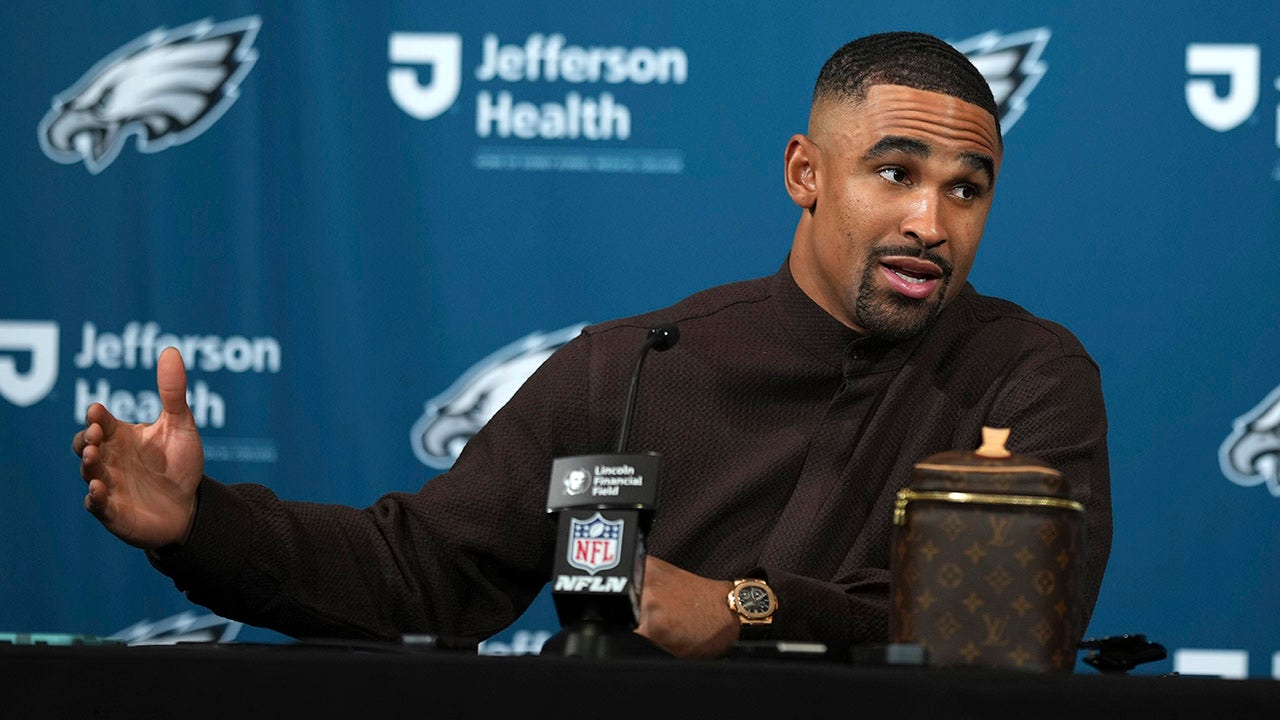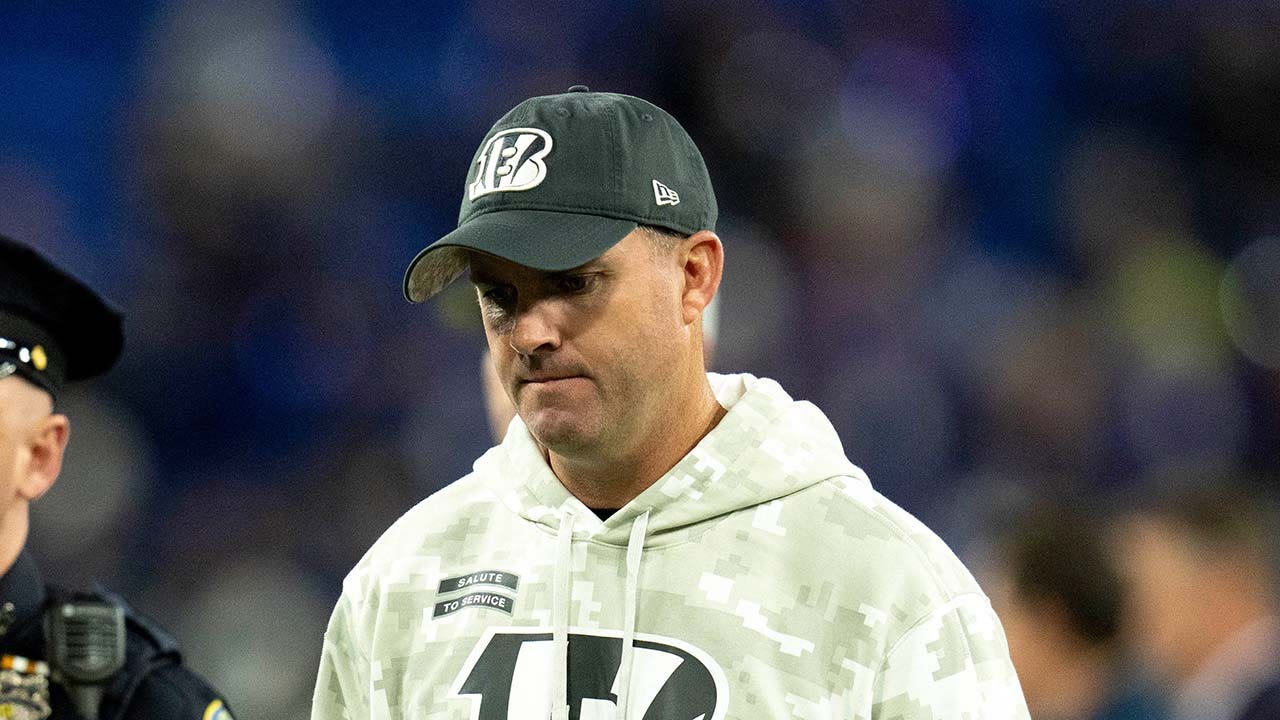Go back to last September. Jannik Sinner has just lost in the round of 16 at the U.S. Open to Alexander Zverev in a sweaty, five-set mess.
He’s never made the final of a Grand Slam. He has won just one of the tournaments that sit just below that level, and that only in the previous few weeks. No one questions his promise, but there aren’t a lot of people predicting a rocket ride to the top, or anything like what has unfolded since then for the 22-year-old, carrot-topped Italian.
Now flash-forward seven months…
“He is the best player in the world right now,” said Grigor Dimitrov, the 32-year-old Bulgarian who now knows that better than anyone.
Dimitrov got trounced by Sinner in the Miami Open final on Sunday, 6-3, 6-1. It was the 23rd win in 24 starts this season for Sinner. He hit No 2 in the new rankings as a result, a massive achievement for him, and the latest sign of tumult in a season that has been filled with them.
For years, professional tennis, especially on the men’s side, had an air of predictability to it.
In recent times, everyone was chasing Novak Djokovic, and the way last year went, when he won three Grand Slams, should have won the other one, and finished the year at No 1, there was little to indicate that this year would be any different, unless Carlos Alcaraz was ready to take over.

(Saeed Khan/AFP via Getty Images)
On the women’s side, Iga Swiatek was largely unassailable and figured to be for some time.
As for the sport itself, players griped about the endless schedule and a packed calendar that gave them little time off, but the folks who ran tennis, the leaders of the Grand Slams and the men’s and women’s tours, always threw their arms up and said this was the way it had to be, now and forever.
It took three months for all of that to get tossed out the window, or perhaps put on the shelf is the better metaphor. After all, there is still time for Djokovic to become Djokovic again, for Swiatek to win with the level of consistency that had her reeling off 37 straight wins not long ago, and for all the plans to reshape the sport to fizzle like the occasional efforts of the past.
And yet, at the first turn of the 2024 tennis season, as the game makes its shift from the hard courts of Australia, the Middle East and North America that dominate the first quarter of a year to the organic surfaces of Europe for the spring and early summer, mystery has become the narrative, and never more so than at the Miami Open over the past two weeks.
If, last September, you had on your bingo card Sinner becoming the world’s dominant player and Danielle Collins, an American ranked 53rd in the world, winning a big title, then fair play to you. Not many of us did, but this is the way the first quarter of the season is going — a world of surprise and chaos where what recently seemed so unlikely becomes more probable with each passing week.

Djokovic hasn’t won a tournament all year and didn’t even make the final of the Australian Open, which he has won 10 times, and done so with barely any resistance in recent years. Last week, he fired his longtime coach Goran Ivanisevic, who had helped him win a dozen Grand Slams in recent years. Djokovic, who has turned over several other long-serving members of his team in the past six months, said he doesn’t know when or if he will name a new coach. He might just fly solo for a while.
His heir apparent, Alcaraz, showed flashes of his old magical self at the BNP Paribas Open at Indian Wells in California during the first half of the so-called Sunshine Double that concluded in Miami this past weekend. But a player seemingly so filled with joy on his climb to the pinnacle of the sport said he’s been struggling for months to find those emotions in practice and in matches. Really.
Did you think Stefanos Tsitsipas of Greece, just 25 and once tapped to take over the game, might emerge from 2023 healthy and ready to fulfil his promise? Not so much.
Tsitsipas, so dedicated to tennis for so long, has been balancing his preparations with some of the mayhem outside his previous world. He’s been in love with women’s tennis star Paula Badosa since the middle of last year. He tumbled out of the top 10 in February, and is hoping for a turnaround on the European clay he so loves.
Swiatek has been overpowering in stretches and eminently beatable in others. The list of Swiatek slayers this season includes Linda Noskova of the Czech Republic, and two Russians, Anna Kalinskaya and Ekaterina Alexandrova. Only Alexandrova is in the top 20.

(Robert Prange/Getty Images)
The most likely candidate to topple Swiatek is Aryna Sabalenka, who briefly replaced her at No 1 last fall, but she is just 3-3 since winning the Australian Open, and is now dealing with a personal tragedy.
Two weeks ago, a recent boyfriend, Konstantin Koltsov, a former hockey player and her companion for much of the past three years, was found dead in what police in Miami ruled an apparent suicide. Sabalenka played in the Miami Open just days after Koltsov’s death, losing her second match, but has not spoken publicly other than posting a brief statement on social media.
“Konstantin’s death is an unthinkable tragedy, and while we were no longer together, my heart is broken,” Sabalenka wrote. “Please respect my privacy and his family’s privacy during this difficult time.”
She has been practising since her loss, trying to get back to something approaching normalcy, but her state of mind when the clay-court season begins this month is anyone’s guess. Sabalenka, 25, lost her father when she was 19.

(Robert Prange/Getty Images)
As for the game itself, there is a corporate civil war at hand, with the Grand Slams trying to replace the current free-for-all 11-month season with a premium tour that includes just their own tournaments and the 10 other top events on the calendar, such as the Sunshine Double, and each tour’s finals. Only the top 100 or so qualify.
The rest of tennis would be relegated to a qualifying tour. The other men’s and women’s tours, the ATP and WTA, pretty much hate that concept, since it robs much of their domain of relevance. Their leaders are trying to strengthen a partnership with Saudi Arabia that would largely buck up the status quo that dozens of players despise — and add another tournament in Riyadh, the Saudi capital.
That tour makes players compete in the longest season in sports for a fraction of the money that golfers and other athletes earn. They’ve given the leaders of their newfound association, the Professional Tennis Players Association, a “burn the boats” mandate, and sooner rather than later. More meetings to suss this all out are likely to take place in Madrid at the end of the month.
Through all the uncertainty, Sinner has strangely become the constant.
Four tournaments, three titles, one semifinal, and only one loss — to Alcaraz, the eventual champion in Indian Wells. Not bad.

(Clive Brunskill/Getty Images)
He sensed he had turned a corner at the end of last season, when he beat Djokovic twice and led Italy to Davis Cup final victory — but he didn’t envision winning with the clinical efficiency that he has been doing this season. There is a quality to it that is, in the most technical of tennis terms, bananas. “I was not expecting this, for sure,” he said.
There is a seductive cruelty to the way Sinner beats people these days.
One moment an opponent is digging in, trading service games, rallying back and forth. Then all it takes is a volley that pops off the racket a little too high, or maybe they get lazy on a forehand for a split second, not moving their feet and short-hopping it back without much zip.
Suddenly this year, that’s all the opening that Sinner needs to pounce and never look back.
He sprints to that short volley and knocks it through the court. That soft ball which lands any more than a few feet inside the baseline allows him to take control of the rally. A game goes from even to 15-40 in an instant.
Then he’s lunging to block a 130mph serve back at the feet, sending whoever it’s coming at, an in-form Dimitrov or anyone else, backpedalling and thinking they have to pull off a miracle shot just to stay even, which they sort of do. And then they do the opposite.
By the end, they are shanking overheads into the back wall, as Dimitrov did late in the second set on Sunday to seal his fate.
“You see how focused he is now, how determined he is,” Dimitrov said of Sinner. “Can he play any better? I don’t know.”

Darren Cahill, one of Sinner’s coaches, says he absolutely can.
Both he and Sinner said this run of success has its roots in all the strength and endurance training Sinner has done the past two years with Umberto Ferrara, his fitness trainer. It has allowed him to crank up the velocity on his strokes and his serve, and to play those long points that have him zig-zagging up and back and across the court, for 20 and 30 shots, and then to bring his heart rate back down over the next 30 seconds so he can play another one.
Cahill has watched and coached some of the sport’s greatest players over the past 25 years — Andre Agassi, Roger Federer, Rafael Nadal, Djokovic. He didn’t want to start comparing Sinner’s achievements to theirs “but the level is right there,” he said on Sunday evening.
What comes next? Probably a bit more chaos.
Unlike so many Italians before him, Sinner is not at his best on clay. On Sunday evening, a sparkling glass trophy sitting in front of him, he was already talking about preparing for his first clay tournament, in Monte Carlo, Monaco — the principality in the south of France where he lives.
Training will start on Thursday, he said, with his first match a few days later. Maybe now he’s got the lungs to last during those long, physical rallies and matches on the dirt, or maybe not. “Usually, I struggle there,” he said.
Maybe the clay will slow him down, leaving the door open for Djokovic and Alcaraz to reemerge. Nadal, who has barely played the past year and a half, is lurking, too, recovering from hip surgery and a subsequent muscle tear in that same area and preparing, at nearly 38 years old, on the red clay where he has long been nearly untouchable.
And wouldn’t that be just the sort of chaos that has become the order of the day?
Or would that be a return to order?
In 2024, nothing in tennis is really all that clear.
(Top photo: Frey/TPN/Getty Images)






